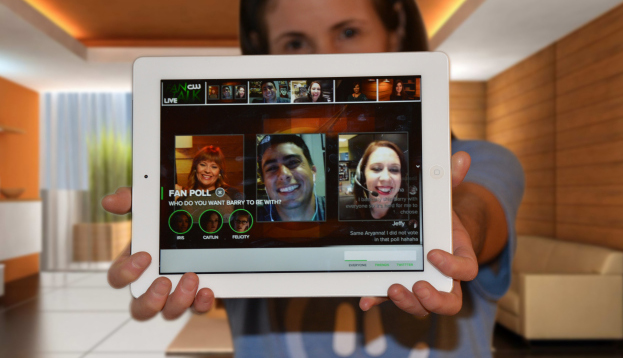Could the future of broadcast content look something like a Skype call? Former Hulu head of content acquisition Alex Kruglov thinks so.
Kruglov is the founder of Smiletime, a startup seeking to create a “social, multi-camera, interactive, live experience” — “S.M.I.L.E.” for short — to drive original shows as we know them towards the crossroads of broadcast and social.
Smiletime operates through a sort of broadcast called a “Smilecast”, where two or more people appear on a videoconference-esque screen and interact with one another. On-screen graphics and text allow audiences to interact with a broadcast through polls and messaging, providing for an experience far more participatory in theory than television or popular online streaming services like YouTube and Hulu.
Critics are quick to point out Smilecast’s similarity to Google Hangouts, among others; Kruglov, anticipating a “wait-I’ve-seen-this-before” reaction, says he doesn’t want Smilecast adherents to be overwhelmed by technology so new and unfamiliar, they refuse to latch onto it.
Kruglov says a batch of features decidedly closer to the innovative side of things will come along once consumers have familiarized themselves with Smilecast.
“We’re really thinking of Smilecasts as a place for broadcasters to innovate, and for viewers to connect,” Kruglov said in an interview with Re/code.
Kruglov is fond of reminding skeptics that early television was the domain of radio plays, as broadcasters didn’t yet know how to craft a message to fit the new medium. Indeed, in the age of Snapchat billionaires, it would appear that anything — including television and online streaming as we know them being supplanted by videoconference-based technology — is possible.

